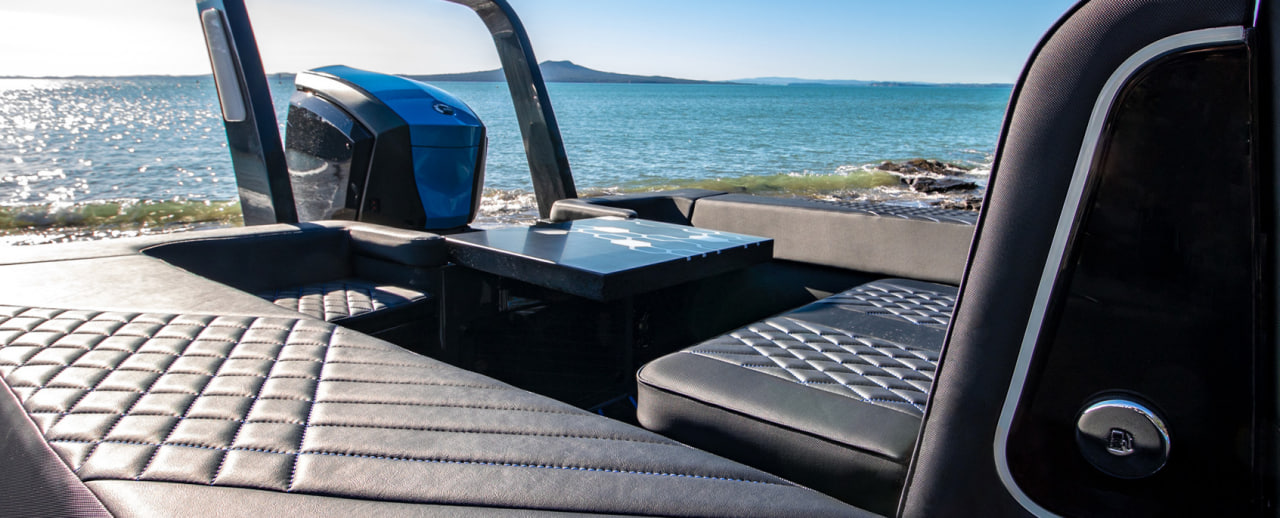Boat seats are used every time you go on the water. People sit, relax, and enjoy the ride. But sun, saltwater, rain, and dirt quickly damage seat material. That’s why taking care of upholstery boat seats is important. Good seats last longer, look better, and make boating more comfortable for everyone.
Below you will find simple advice about materials, cleaning, and smart choices to keep your seats in great condition.
Why Good Upholstery Matters
Boat seats face harsh outdoor conditions. Sunlight can fade color. Moisture can cause mold and mildew. Rough use can lead to cracks or tears.
Good upholstery helps:
- Protect the foam inside
- Keep passengers comfortable
- Improve your boat’s appearance
- Increase resale value
So, seat care is not just about looks — it’s about preserving your boat.
Choosing Material for Upholstery Boat Seats
Marine-grade vinyl is the most popular option. It is made to handle wet and sunny environments. It wipes clean easily and dries fast. But not all vinyl is the same.
Here are useful features to look for:
- UV protection to prevent fading
- Waterproof coating to block moisture
- Mold and mildew resistance
- Strong backing so it doesn’t stretch too much
- Smooth texture that doesn’t get too hot
Some people choose fabrics for special areas inside cabins, but vinyl remains the best option for seats exposed to the sun.
Comfort Depends on Good Foam
Foam is the inside layer that you do not see. If the foam is low-quality, even the best vinyl will not feel good.
There are two main types:
- Closed-cell foam — does not absorb water, keeps shape longer
- Open-cell foam — softer but can hold moisture
Closed-cell foam is usually better for seats in open areas. Dry foam means no bad smells, no mildew, and longer life.
Design Options for Boat Seat Upholstery
Many boat owners want a clean look. Others prefer stylish patterns and colors. You can choose:
- Plain white seating for a classic look
- Two-tone combinations that match the boat
- Decorative stitching or piping
- Textured areas to reduce slipping
Simple designs are easier to clean. Dark colors get hotter in the sun. Bright colors show stains faster. Keep these points in mind before choosing a style.
Cleaning and Maintenance Tips
Proper cleaning saves money in the long run. Dirt and salt should not stay on the material for too long.
Follow these easy tips:
- Rinse seats with fresh water after trips
- Use mild soap made for marine vinyl
- Avoid bleach and alcohol — they damage the coating
- Dry seats completely before covering
- Clean spills right away
A small amount of attention helps prevent major problems.

Preventing Mold on Boat Seats
Wet seats are a common cause of mold. Moisture gets inside the material or the foam. Mold leaves stains and smells bad. It can even weaken the vinyl.
Here’s how to avoid mold:
- Let seats dry in the sun when possible
- Improve airflow with ventilated covers
- Store loose cushions indoors
- Check for water leaks around seats
If you see black dots, clean quickly so the mold does not grow deeper.
Common Problems and Quick Fixes
Even with good care, issues can appear. Small cracks or loose seams may show up after years of use.
Here are easy solutions:
- Tiny cracks: use marine vinyl repair kits
- Loose stitching: re-sew seams before they rip more
- Sticky residue: clean with vinyl-safe remover
- Minor stains: marine vinyl cleaner usually works well
If damage is large, reupholstering the seat is a better option.
When It’s Time to Replace Upholstery Boat Seats
Sometimes repair does not help anymore. You should replace upholstery when:
- Vinyl is badly cracked or peeling
- Foam stays wet even on hot days
- Seats smell like mold
- Threads break and seams open
New upholstery improves comfort and avoids moisture problems inside the seat base.
DIY or Professional Upholstery?
Some boat seats are simple to work with. You can remove the old vinyl, trace the shape, and staple new material. But curved seats or folding seats are not easy to cover.
DIY is fine when you have:
- A simple seat shape
- Proper tools and patience
- Some sewing skills
Professional services are better when:
- You want a factory-style finish
- Seats have special shapes
- You want long-lasting results
Good installation protects seats from stretching and tearing.
Storage Matters
If your boat is stored outside, use covers that allow airflow. Completely sealed covers trap moisture and increase mold risk. Indoor storage is always better for preserving upholstery boat seats.
When trailering the boat at high speed, secure the covers well so wind doesn’t loosen them and scratch the vinyl.
Final Advice
Taking care of upholstery boat seats is not difficult. Use strong marine-grade materials. Keep foam dry. Clean regularly with safe products. Protect seats from the sun and rain when not in use. These simple steps help your boat look cleaner, smell better, and last longer.
Comfortable and well-kept seats make every ride more enjoyable — for you and your guests.
